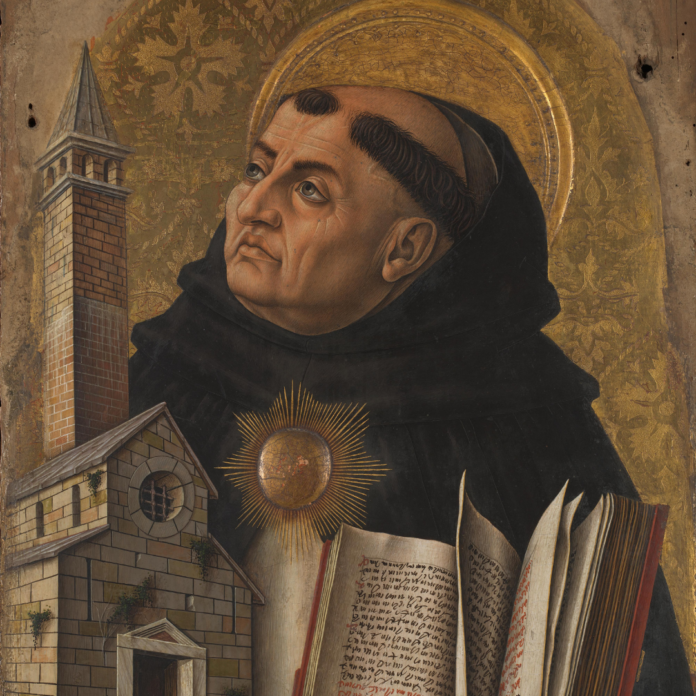Artistic depictions of saints like Saint Anthony of Padua, Saint Francis of Assisi, and even Saint Thomas Aquinas, show them with a similar haircut.
This style involved shaving the top of the head but leaving a circle or halo shape of hair around the head.
Wikimedia Commons, Public Domain
During medieval times, clerics in a few orders (most notably Dominicans and Franciscans) were marked by a haircut some today would refer to as bizarre.
The practice of tonsure has been recorded since the end of the fifth century. Pope Paul VI abolished the tonsure in 1972.
According to the Catholic Encyclopedia,
“Tonsure (Lat. tondere, “to shear”), a sacred rite instituted by the Church by which a baptized and confirmed Christian is received into the clerical order by the shearing of his hair and the investment with the surplice.””As to the monastic tonsure, some writers have distinguished three kinds: (1) the Roman, or that of St. Peter, when all the head is shaved except a circle of hair; (2) the Eastern, or St. Paul’s, when the entire head is denuded of hair; (3) the Celtic, or St. John’s, when only a crescent of hair is shaved from the front of the head.”
The encyclopedia also notes that it has been “passed out of use” for the most part, although some communities still wear them.
Rev. Ambrose Little, O.P., of The Thomistic Institute explains that all monastic orders had this haircut. It was a sign that the individual was dedicated to divine service.
He adds that the men in formation for the priesthood were given the tonsure early in their formation, just like they are given the office of acolyte and lector today.
This haircut may have originated for a few reasons.
“It seems to have arisen in early monasteries where the tonsure was a sign of flight from the world and worldly status,” Rev. Little, O.P, says.
Saint Thomas Aquinas is cited as referring to the tonsure as a call for perfect virtue and royal dignity because it resembles a crown.
Click here if you cannot see the video above.
Other theories are that it not only symbolized obedience and detachment, but also became a symbol of the crown of thorns worn by Christ during His Passion and death.
According to Father Gregory Pine, O.P., another theory says that the tonsure was used as a tool to differentiate clerics from the general population.
In a podcast interview with host Matt Fradd, Father Pine was asked why he does not have a monk haircut.
He said, “We don’t wear a tonsure anymore because it’s no longer required by ecclesiastical law.”
He continues by saying that tonsure was a way of identifying a cleric because sometimes it was hard to tell a cleric apart from other people due to the way people dressed at the time.
We don’t experience the same problems today, which may be a reason why it is no longer required.



